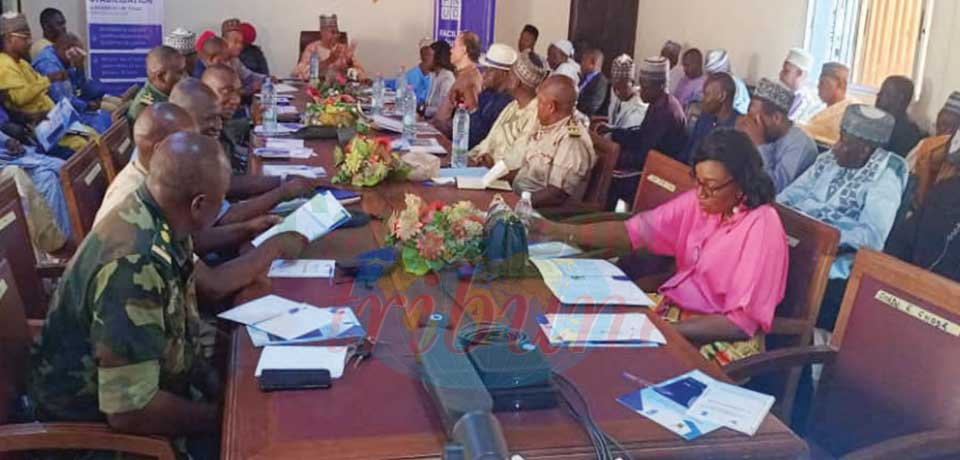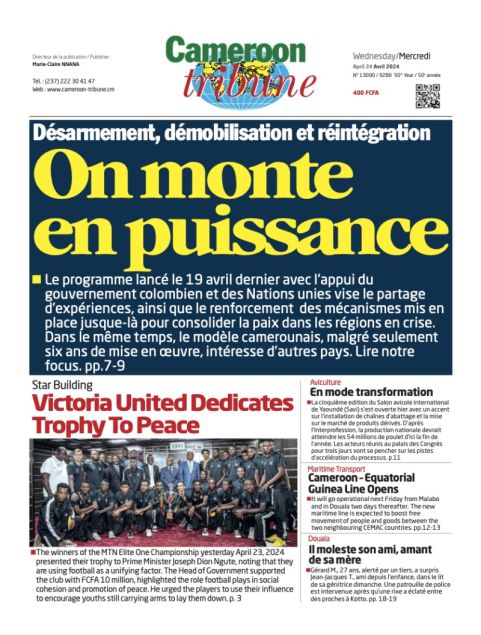Resurgence of Road Accidents: Government Presents Pre-emptive Measures
Hereunder is a press statement of Communication Minister during a press conference in Yaounde last Thursday.
“Distinguished Journalists,
Dear Guests,
Ladies and Gentlemen,
For several weeks and even months now, our highways have been the scene of serious traffic accidents, claiming the lives of hundreds of road users and causing significant personal injuries and damage to property.
Already described as a great concern, the resurgence of accidents has recently reached the danger level.
The Government, in the face of such a peculiar situation with serious consequences on the economic and social life of the nation, could not have remained unconcerned.
The Prime Minister, Head of Government, who doubles as Chair of the National Road Board, formally instructed me to convene you to this press conference for us to exchange on an uncompromising assessment of this heavy toll, which is seriously affecting many of our fellow citizens and many others with various levels of consequences and prejudices.
The focus of this press conference shall be to enlighten the national community on this already preoccupying concern, and to mostly present the measures taking so far by the Government to curb this phenomenon in a radical and lasting manner.
Nonetheless, before entering into the crux of the matter, allow me to start by acknowledging the presence here of experts sent by the technical administrations for the purpose of this press conference.
These are high-ranking collaborators assigned for this purpose by their respective hierarchies, namely, the Minister of Territorial Administration and Decentralization, the Minister of Transport, the Minister of Public Works, the Secretary of State for Defense in charge of the Gendarmerie, the Delegate General for National Security.
Distinguished Experts, I wish you all a warm welcome to the Ministry of Communication.
Distinguished Journalists, Ladies and Gentlemen,
If we go back to the year 2010, during which the statistics of deaths from road accidents was at the peak, recording more than 1,200 deaths, the situation right up to 2014 apparently presented a downward trend of these statistics as that year ended up with a report of 1102 deaths.
As far as road accidents are concerned, it should be underscored that while over 3088 cases were reported in 2014, it is an alarming situation for the first eight months of 2017, that is at the end of August of this year, with a report of 4190 accidents, in which 179 resulted to deaths, 784 resulted to personal injuries and 3227 resulted to property damage.
In these statistics, it should be stated that information at our disposal reveal that, the month of August 2017 was particularly a deadly one, with a total of 626 accidents of all categories, in which 34 resulted to deaths, 79 resulted to personal injuries and 513 resulted to property damage.
Still under these unhappy statistics, the month of August 2017 was the most illustrated, with a report of 98 deaths resulting from road accidents on our national highways.
The causes of the resurgence of this scourge are multifold, in the light of the statement of facts and the findings of investigations carried out following the various tragedies on our roads.
The technically competent administrations in such matters have identified and classified these causes under human, material, infrastructure and environmental categories.
With regard to human causes, drivers should be held accountable for over speeding, risky overtaking, overloading of passengers and/or goods, driving under the influence of alcohol, unauthorized parking, non-respect of warning road signs and markings for vehicles in distress, use of phones while driving, lack of driving skills, overlapping of solid lines, just to name a few.
Owners of traveling agencies should also be held accountable for their notorious low salary payments, lack of social protection for drivers, lack of a planned driving roster for these drivers and, in some cases, the clandestine nature of their activities.
In terms of physical causes, they are directly related to the technical condition of vehicles mainly characterized by wearing tires, failure of braking systems, and the guilty complacency of agents in charge to inspect vehicles.
Concerning the causes in terms of infrastructure, they generally have to do with the state of roads characterized by frequent potholes, visibility failure due to the covering of roadsides by trees and brushes, caused by the non-clearing of roadsides, the scarcity or lack of rest areas, the lack of equipment to pull stuck or abandoned vehicles on roadsides, poor road signs and establishment of unwanted speed breaks.
In terms of environmental causes, we should indicate the aspects of rainfall and unclear weather, which significantly reduce the visibility of drivers.
In terms of the percentage of the various causes earlier identified, at least for the particularly deadly period of August 2017, investigation findings reveal that 70% of accidents are due to human causes, 20% due to infrastructural causes and 10% due to technical causes.
Whatever the case, the situation is a serious one.
The Government has therefore step up appropriate measures for a return to more serenity on our roads.
First, based on early observation made so far on this phenomenon, it is necessary to improve the circuit of obtaining and issuing driving license and to enhance the training of candidates for driving license exams.
This reform, which entered into force on 1 September 2017, comprising of a dozen points, includes the computerization of the driving school index files, the following-up of trainees in driving schools, the securing and computerization of the examination circuit to obtain a driving license, the production of a secured driver's license, the introduction of a regulatory driving license form guaranteed by the Security System of Transport Papers “SSTP”, or the introduction of a new tool to strengthen the control of driving licenses.
There is also a proliferation of permanent and unannounced controls at boarding, pick-up and drop-off points of passengers, with the collaboration of the Ministry of Transport, those of municipalities as well as professional trade unions of road transport. There is also the multiplication, with the assistance of the Police and Gendarmerie Forces, of controls on main roads in order to detect and repress cases of violation of the regulations on road transport, cases of overloading, over speeding, and the technical failures of vehicles, the proliferation of controls in technical inspection centres, the close monitoring of high-risk locations of accidents, compliance with the strict regulations governing the hours allowed for the movement of heavy goods vehicles and itineraries open to traffic, the limitation of night journeys, the systematic removal of vehicles in distress, poorly parked or in prolonged parking, and stuck vehicles encumbering roadsides, and the construction and layout of rest areas.
To this should be added the generalization of alcohol tests, the intensification in the controls of the regularity of license plates, the technical inspections of vehicles and drivers’ licenses, the regular controls by the Police and Gendarmerie joint patrols at roadblocks, the unannounced visits at bus stations and other passenger boarding places.
In terms of repression, consideration has been given to further penalize certain offenses under the Highway Code and the general rules of conduct on public highway, with the introduction of new custodial sentences in case of commission of such offenses or of violation of the rules of conduct referred to above.
In the very short term, the obligation to respect the optimum ...
Cet article complet est réservé aux abonnés
Déjà abonné ? Identifiez-vous >
Accédez en illimité à Cameroon Tribune Digital à partir de 26250 FCFA
Je M'abonne1 minute suffit pour vous abonner à Cameroon Tribune Digital !
- Votre numéro spécial cameroon-tribune en version numérique
- Des encarts
- Des appels d'offres exclusives
- D'avant-première (accès 24h avant la publication)
- Des éditions consultables sur tous supports (smartphone, tablettes, PC)
Reactions
De la meme catégorie
Promoting Peace, Social Cohesion : Victoria United Dedicates Trophy To Course
- 24 avril 2024 11:46
- 0 likes














Commentaires